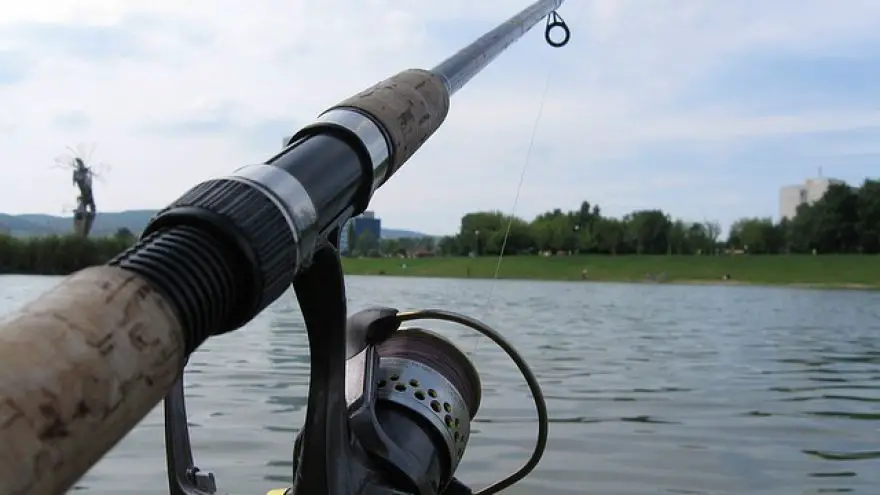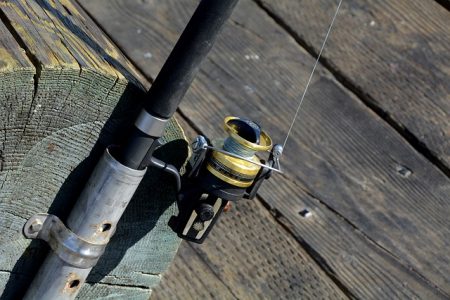Catch and Release Tips
 Catch and Release Tips
gearweare.net
Catch and Release Tips
gearweare.net
Catch and release fishing and regulations are becoming more and more prevalent. We live in a time when people are vocal about animal rights. More of our waterways are being restricted as ‘catch and release only’ so that populations stay high and fish get larger and healthier. More importantly, the matter just comes down to respect for the animal. I personally fish for the dinner table in most cases. However, I truly believe that a fish should have every possible chance of survival if it is not being kept, cleaned, and cooked.

The unfortunate part is that most people do not realize the damage they do as they handle their fish. At least 35% of bait caught fish die after an attempted release, and over 60% of fish that swallow the hook die. It is really sad to think that these fish die simply for our amusement. Do not misunderstand me. I love sport fishing and enjoy the challenge, but at what cost? I simply do not see the point of a fish dying if it will not be feeding anybody.
In this article I will cover some basic guidelines to help you be a more responsible catch and release angler. Hopefully, with a few simply adjustments we can keep more fish alive to grow larger and healthier.
Table of Contents
Barbless hooks
I know this may seem obvious, but not for everybody. The barb on any hook is what holds it in the flesh as the fish tries to escape. Unfortunately, it is also the reason for most of the damage done to the fish. Sure, going barbless might make it a bit more likely for a fish to jump off your hook. However, the lack of resistance caused by not having a barb actually allows you to set the hook easier. The barb does make a difference in keeping the fish on the hook, but not a huge one. If you want to find a middle ground, try using pliers to crimp the barbs on your hooks. This gives the hook a little bump for resistance but will not do as much damage as a full barb.
Leave the hook
We have all had a fish swallow the hook and have made an effort to remove it. It normally turns into a bloodbath. Your best bet is to leave the hook in place and snip your line as close to the hook as possible. Over time the fish will likely shed the hook on its own. A recent study in PA showed that 66% of fish that swallowed a hook survived if released with the hook. Those that tried to remove the hook… only 11% survived.
Do not overplay the fish
Many anglers will use a thinner line that is less visible and then play the fish for a long time to wear it out. Fish cannot recover from this level of exhaustion. You are best to use a thicker line and strong rod to bring in your fish as quickly as possible.

Use the right net
One of the greatest stresses on a fish is being pulled out of the water by the line. You should always have a good net with you to bring your fish out of the water. In addition, nylon nets cause more tangles and can cut into the fish. I have switched all my nets out for rubber mesh and it works great.
Wet your hands
Much of the damage done to fish is caused when our hands remove the mucus membrane on their bodies, especially trout. This membrane protects the fish from bacteria, fungus, and parasites that could kill it. Handle the fish as little as possible, and wet your hands first. This will keep the damage to a minimum. Pay special attention to the gills and eyes, and never hold a fish by anything other than the bottom lip.
Watch the head
The head of a fish is not designed to take abuse like the human head. Even a small impact can kill the fish. In fact, head injuries are the leading cause of death in catch and release fish.

Keep it off the ground
Fish do not belong on land. If you land your fish by dragging it up onto the shore, you are almost guaranteeing its death. Keep the fish suspended above the ground until you are ready to release it.
Keep the fish in the water
If you are planning to take a picture of your monster catch, be responsible about it. Keep the fish in the water until you are ready for your picture, and never bring it out of the water for more than five seconds at a time.
Revive it the right way
If you have ever been taught to move your fish back and forth in the water to revive it, stop immediately. You are suffocating the fish. Simply face the fish upstream in clear water and let the current run through its mouth. It will let you know when it is ready to take off.
Watch the heat
Certain types of fish have a hard time recovering in high temperatures. If it gets above 80 degrees, check with your local conservation department to ensure it is not too hot for catch and release.

It is very possible to have fun fishing and be responsible at the same time. After all, we want to be able to pass on the experience of fishing to our kids and grandkids. If we do not follow conservation procedures, that may not be an option. Remember these rules for catch and release, and you can help us keep the fun of fishing alive for the next generation.













